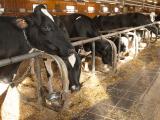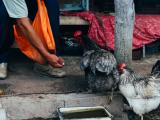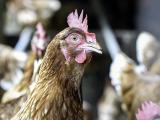Oct 10, 2008 (CIDRAP News) – Animal health officials in Germany today reported an H5N1 avian influenza outbreak at a commercial farm in Saxony, signifying the country's first outbreak since December 2007.
The outbreak was detected at a farm in Markersdorf, in east central Germany not far from the border with Poland, according to a report today from the World Organization for Animal Health (OIE). The report said one bird tested positive for the H5N1 virus.
Elke Reinking, a spokeswoman for the Friedrich Loeffler Institute in Insel Riems, Germany, said the bird that tested positive was a duck, according to a report today from Bloomberg News.
According to the OIE report, the H5N1 in the single bird was detected during "routine laboratory investigation." There were no movements of animals into or out of the affected farm within the last 21 days, the report said.
The OIE report said 1,434 of the remaining birds were culled to control the spread of the disease. The farm contained 800 geese, 550 ducks, 60 chickens, and 24 turkeys.
Germany's last H5N1 outbreaks occurred in December 2007, striking poultry at three small farms in Brandenburg state, according to previous reports.
In other developments, livestock officials in South Korea recently reported a low-pathogenic H5N2 avian influenza outbreak at a duck farm in the city of Yesan, in South Chungchong province, south of Seoul, according to an Oct 6 report to the OIE.
The disease was detected during routine surveillance that has been conducted since September at all parent stock duck farms, the OIE report said. Authorities have not determined the source of the virus, and they culled 5,000 birds to prevent the disease from spreading.
Elsewhere, veterinary officials in Vietnam recently filed an update report with the OIE that details nine H5N1 outbreaks that occurred between late July and mid September. According to the Sep 30 report, most of the outbreaks occurred in southern provinces, and all have now been declared resolved, except for one in Ca Mau province, at the southern tip of the country. All involved unvaccinated ducks and chickens.
The nine outbreaks killed 2,275 birds and led to the culling of 5,472 more, according to the report. Authorities said the sources of the outbreaks were probably the introduction of new live animals, illegal movement of animals, and contact with fomites such as humans, vehicles, or feed.
Since posting the OIE report, Vietnam has reported another H5N1 outbreak. The disease struck 300 ducks at a household farm in Nghe An province, in the central part of the country, according to an Oct 7 report from Xinhua, China's state news agency. Authorities culled the remaining birds on the farm and disinfected the area, the report said.
See also:
OIE reports on German, South Korean, and Vietnamese outbreaks



















